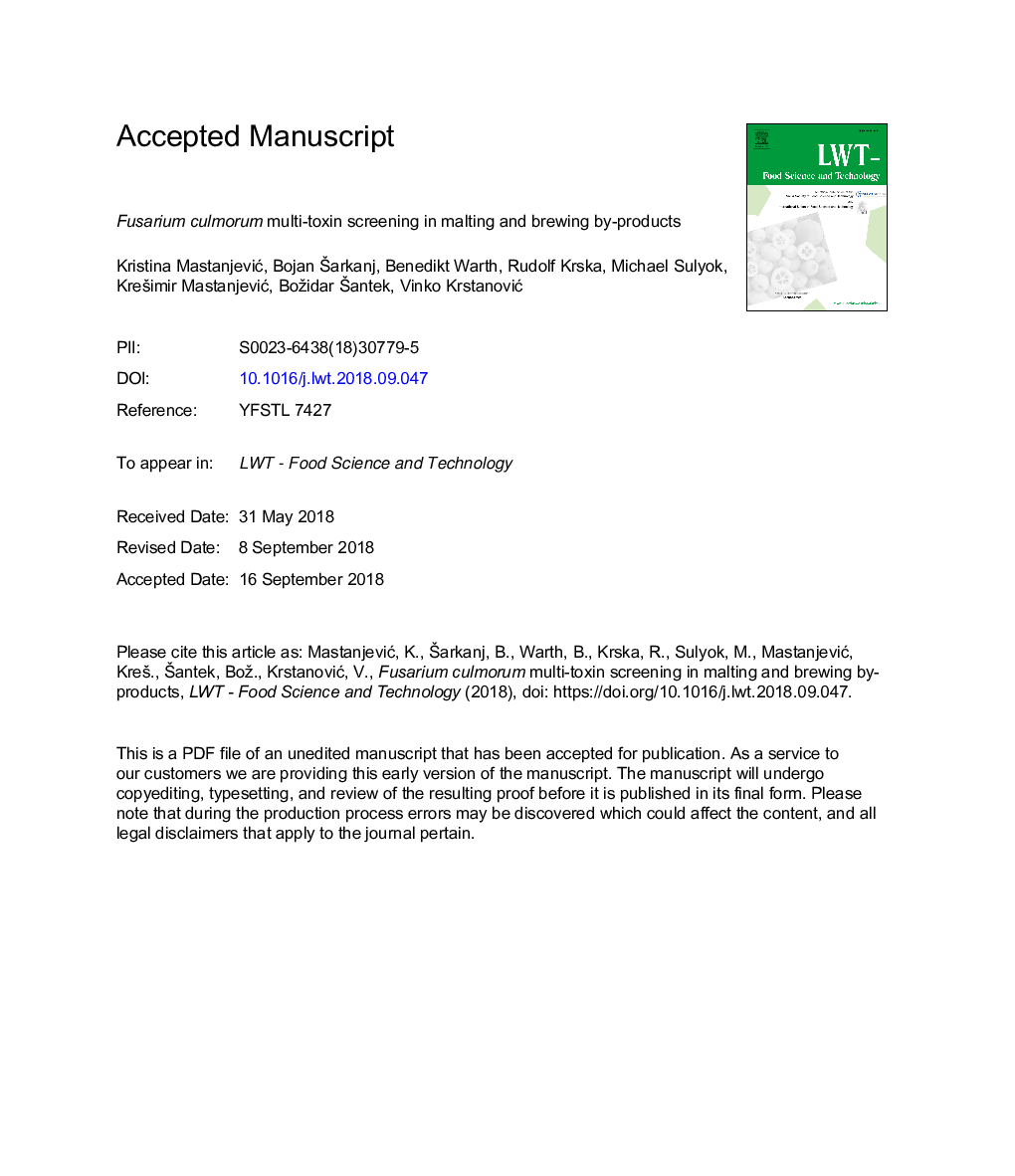| Article ID | Journal | Published Year | Pages | File Type |
|---|---|---|---|---|
| 11032616 | LWT - Food Science and Technology | 2018 | 14 Pages |
Abstract
The aim of this paper was to determine the types and quantities of F. culmorum mycotoxins that can be transferred to brewing by-products, spent grains and spent yeast, under realistic agronomical and brewing process conditions. Standard malting procedure for wheat malt was implemented followed by degermination process and brewing in semi-industrial unit. By-products resulting from the brewing process were analysed by a state-of-the-art multi-mycotoxin LC-MS/MS method. The results showed that the concentrations of determined mycotoxins were somewhat higher in sample infected with F. culmorum, but all values for mycotoxins included into legislative standards, were within the recommended legislative range. Lotaustralin showed the highest content in all samples, amounting over 2000 μgkgâ1. Tryptophol was also found in all samples, but was twice as higher in the sample infected with Fusarium.
Keywords
Related Topics
Life Sciences
Agricultural and Biological Sciences
Food Science
Authors
Kristina MastanjeviÄ, Bojan Å arkanj, Benedikt Warth, Rudolf Krska, Michael Sulyok, KreÅ¡imir MastanjeviÄ, Božidar Å antek, Vinko KrstanoviÄ,
